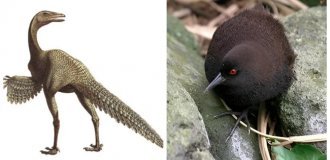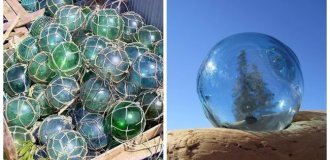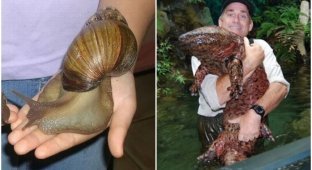Giant tridacna: blue-fleshed mollusk weighs 300 kg and produces pearls up to 34 kg (8 photos)
The love of jewelry and adventure has always been an integral feature of those who connected their lives with the sea. Where, if not in the salty depths of the blue-maned ocean, will ancient treasures and sunken chests be found? Moreover, some of these “chests” will also compete for their treasures! 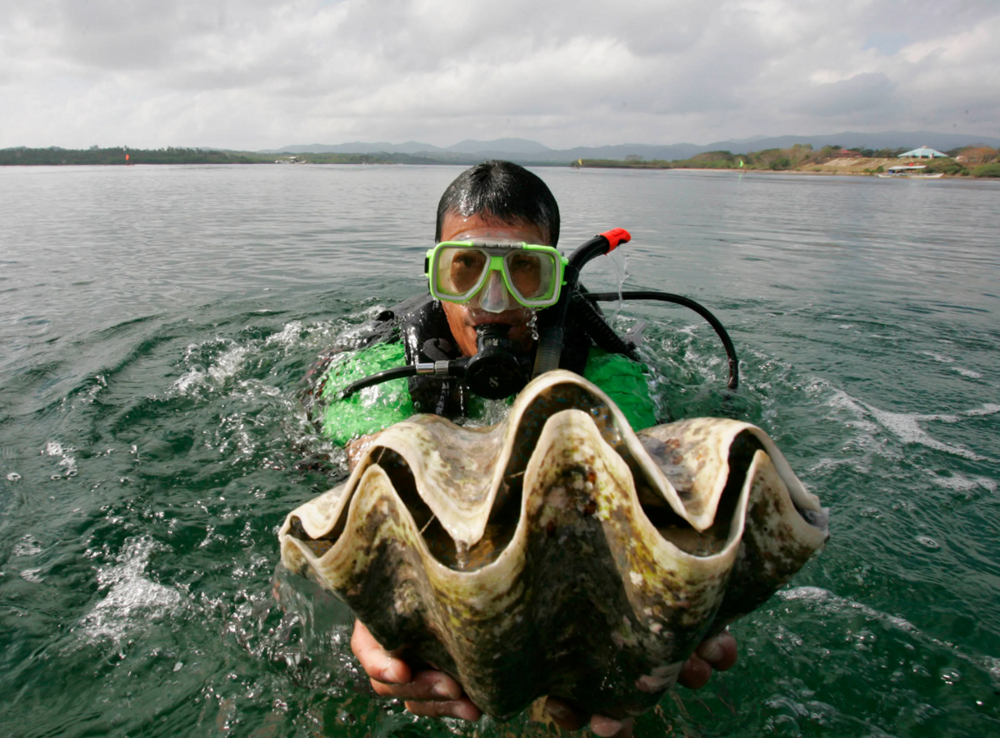
What kind of pugnacious sea boxes are these? Shellfish. Or rather, a giant tridacna. Or, as professional divers also call it, a killer mollusk. 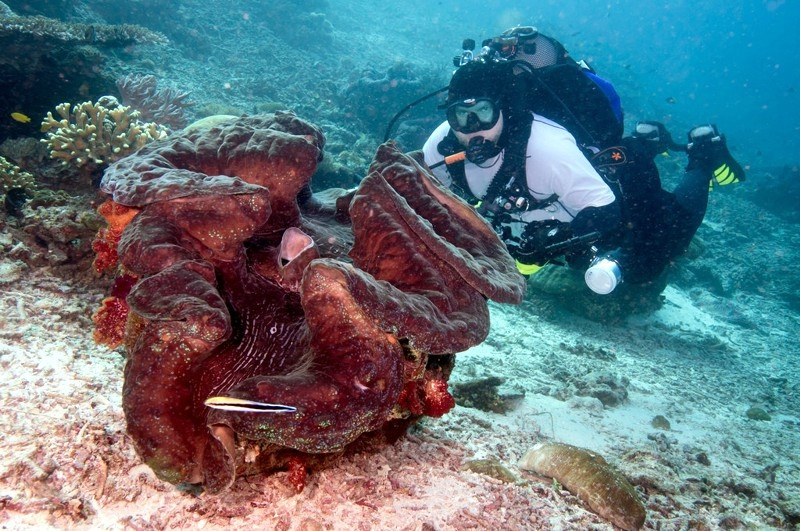
Come on, put your hand inside me. I know you want!
They say that pearl divers left limbs in these bivalves at best, and life at worst. And in the American manuals for the US Navy there were even instructions on how to quickly free yourself from the grip of strong “jaws”. Is this bivalve really that dangerous? 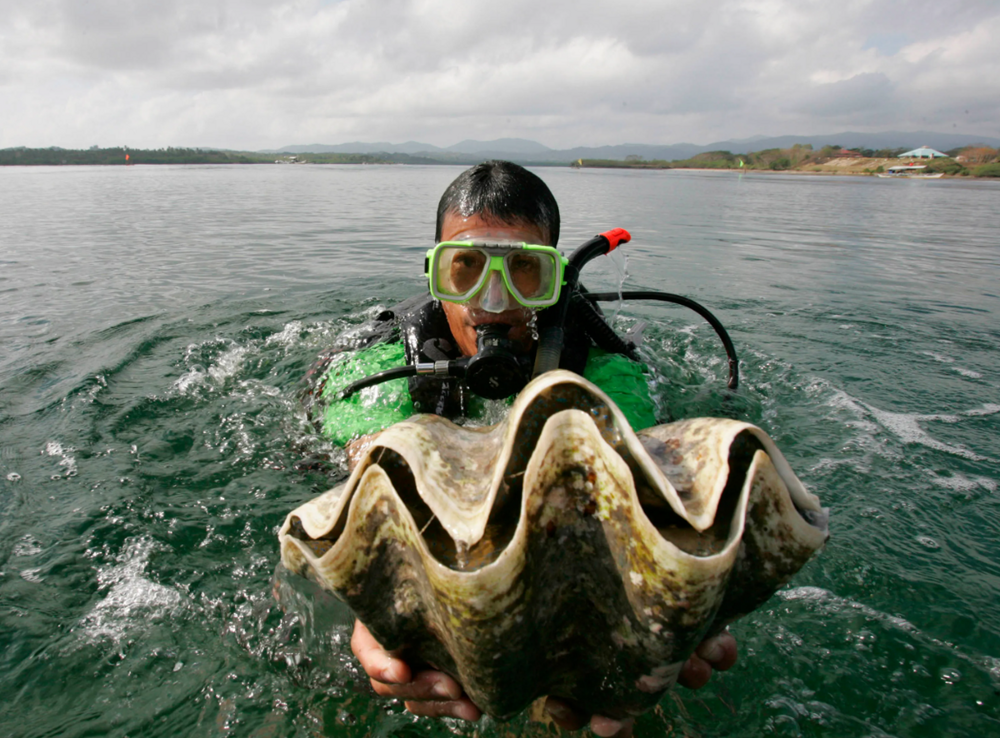
Bring me back to the bottom and no one will get hurt.
You see, the size of a giant tridacna can reach almost one and a half meters, and its weight is an unbearable 300 kg. This makes it the largest bivalve mollusk in the world. It is quite easy to confuse it with a chest, to which raking little hands are drawn. Especially when the precious shine of a pearl is already visible in the folds of the mantle. Yes what! The largest sparkle ever found, the Puerto Pearl, weighs 34 kg! 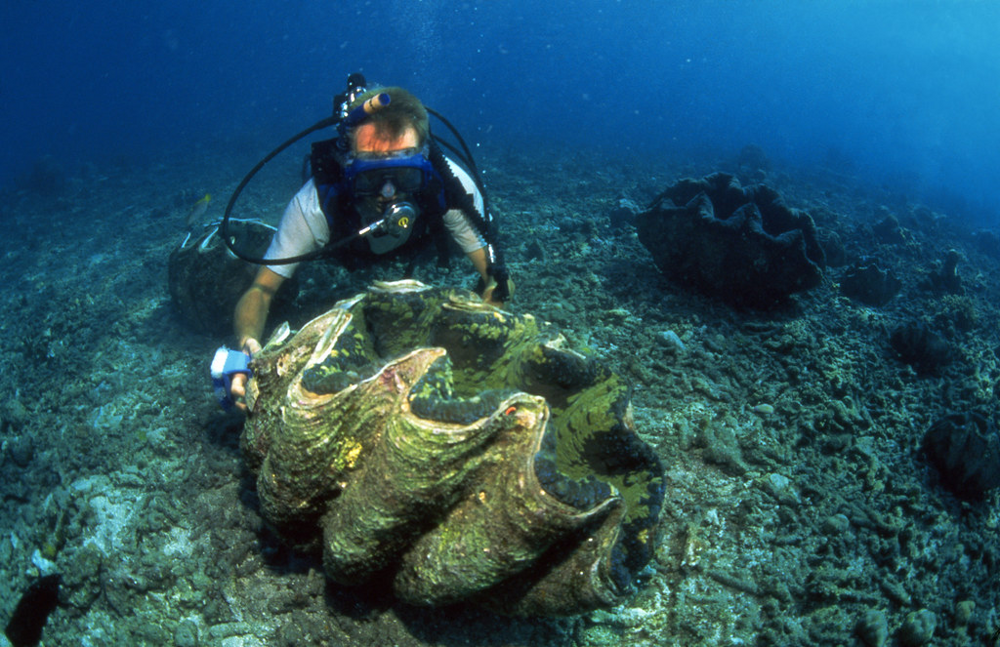
When you take a pot of borscht out of the refrigerator that has been sitting there for two months.
But even if you are incredibly lucky and, having obtained the treasure, happily run to the nearest pawnshop - alas, you will be disappointed. These stones have no jewelry value. This is because there is often no mother-of-pearl layer in such pearls. For the most part, they consist of calcium carbonate - chalk, but very dense. And who would agree to carry several tens of kilos around their neck? 
Despite the fact that the record Puerto pearl has no jewelry value, it costs approximately $100 million.
It turns out that the tridacna is an insidious chest that lures people with cheap brownies and then destroys them in the black abysses? No! The mollusk does not hunt people. His mouth doesn't even close completely. The only reason a giant tridacna would bite is because of fear. The bivalve's mantle is very sensitive to water fluctuations. She simply tries to close herself off from any unexpected invasion of her privacy. But she does it very slowly. Therefore, all the rumors that float around the mollusk are inspired by its titanic size. Fear has big eyes. 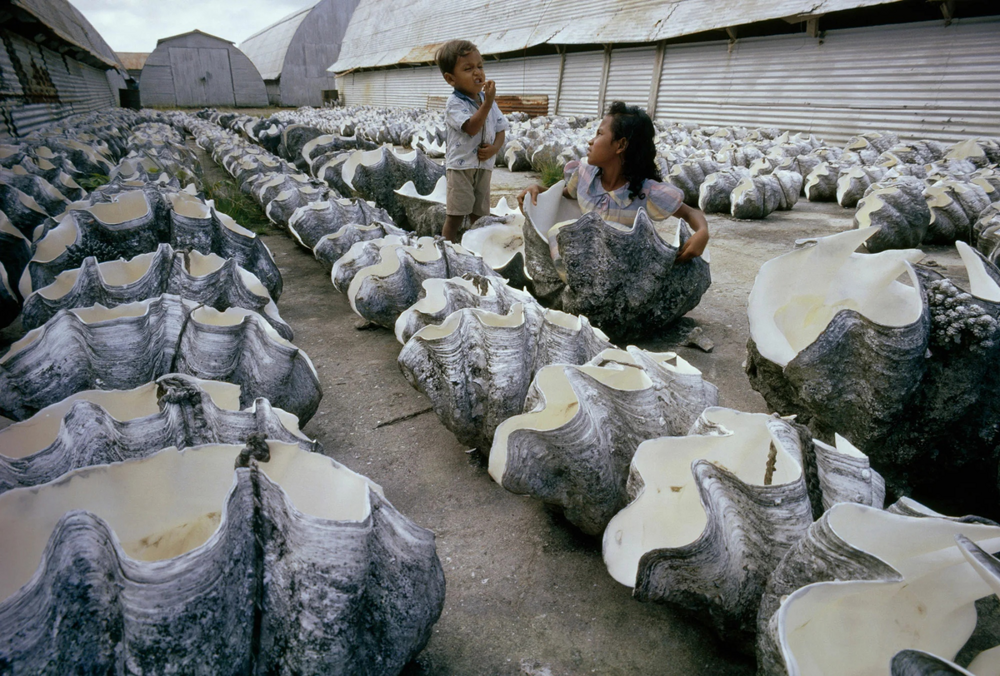
So who is the killer now?
And in general, our bivalve is a peaceful gardener, and not a bloodthirsty cannibal! The giant tridacna lives in coral reefs of the Indian and Pacific oceans. There the bivalve buries its back into the ground and turns the valves towards the surface. The mantle becomes a field in which single-celled algae grow! They receive protection from the tridacna, and they themselves share nutrients that they photosynthesize. But if the union with unicellular organisms has not yet occurred, the bivalve feeds on plankton, driving water through the mantle. 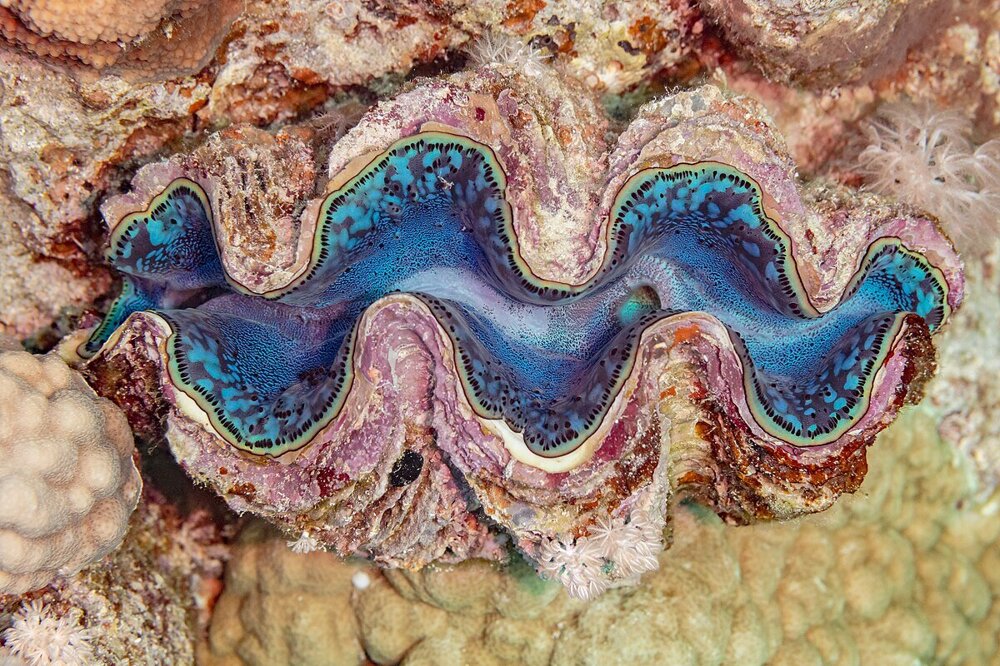
Due to the association with algae, the color of the tridacna's mantle turns bright blue.
There is also love in the world of chest gardeners. Initially, all tridacnids are hermaphrodites. However, they are not capable of self-fertilization. Therefore, to build a family, mollusks spit out reproductive cells into the water. When they enter the mantle of another mollusk, fertilization occurs, after which the tridacna spits out the already fertilized egg. 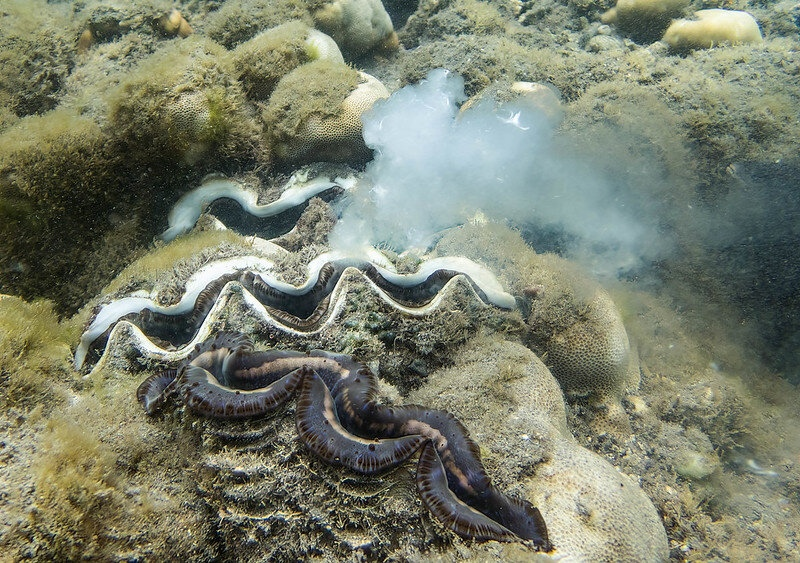
Larisa, I didn’t give a damn about your gifts there.
After 12 hours the larva hatches. She spends a couple of weeks swimming freely until her leg grows back. With the help of the limb, the cub already confidently moves along the bottom in search of a place where it will gain a foothold for the rest of its life. Which, for a minute, can last up to 100 years.










